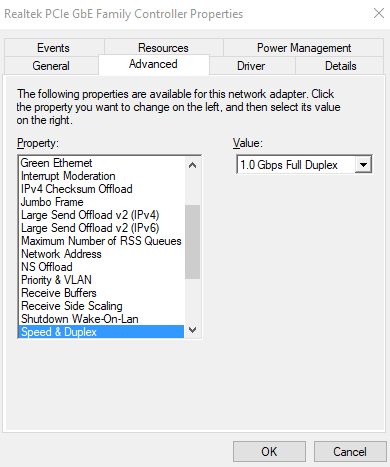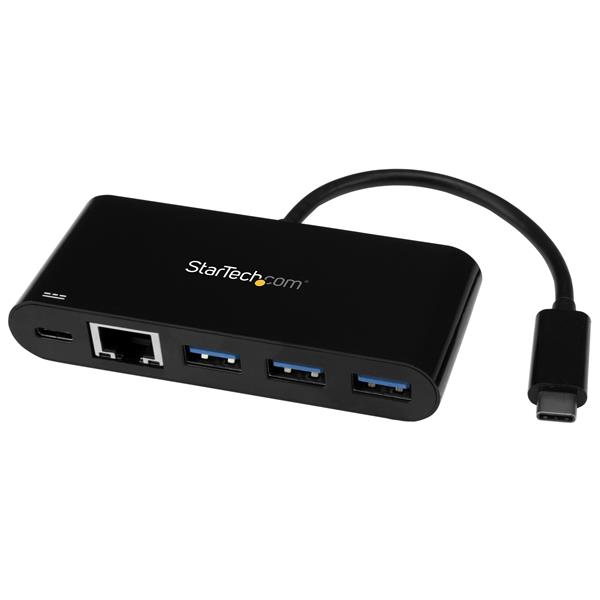A network driver is a software program that controls a device used to connect a computer to a network. Much of what defines both work and personal computing for today’s users relies upon network drivers for streamlined functionality. Network drivers control the interface between a computer and a given network. If you recently update your network driver and then have problems connecting to internet, you can try to fix the network connection issue by rolling back to the previous version. Open Device Manager Network adapters, choose the network adapter that is not working. Right click the network adapter and choose Properties Driver Roll Back Driver. Intel Network Adapter Driver for Windows 10 installs base drivers, Intel PROSet/Wireless Device Manager, advanced networking services for teaming and VLANs (ANS), and SNMP for Intel Network Adapters. This download is valid for the product(s) listed below. I am unable to connect to Wi Fi or internet. 'There might be a problem with the driver for the Wireless Network Connection Adapter' appears on troubleshooting. And when I run ipconfig in cmd, its showing that 'Media disconnected' for Media state for Ethernet, Tunnel adapter. How to resolve the issue?

Installs base drivers, Intel PROSet for Windows Device Manager*, advanced networking services (ANS) for teaming & VLANs, and SNMP for Intel Network Adapters for Windows XP*. These downloads do NOT support Microsoft Windows XP for Intel Itanium processors.
Supported Products:
- Intel 82540EM Gigabit Ethernet Controller
- Intel 82540EP Gigabit Ethernet Controller
- Intel 82541EI Gigabit Ethernet Controller
- Intel 82541GI Gigabit Ethernet Controller
- Intel 82541PI Gigabit Ethernet Controller
- Intel 82543GC Gigabit Ethernet Controller
- Intel 82544 Gigabit Ethernet Controller
- Intel 82544EI Gigabit Ethernet Controller
- Intel 82544GC Gigabit Ethernet Controller
- Intel 82545EM Gigabit Ethernet Controller
- Intel 82545GM Gigabit Ethernet Controller
- Intel 82546EB Gigabit Ethernet Controller
- Intel 82546GB Gigabit Ethernet Controller
- Intel 82547EI Gigabit Ethernet Controller
- Intel 82547GI Gigabit Ethernet Controller
- Intel 8254x Ethernet Controllers
- Intel 82550 Fast Ethernet Controller
- Intel 82552V Fast Ethernet PHY
- Intel 82558 32-bit PCI Bus LAN Controller
- Intel 82559 Fast Ethernet Controller
- Intel 82559ER Fast Ethernet Controller
- Intel 82562 Fast Ethernet Controllers
- Intel 82562ET Fast Ethernet Controller
- Intel 82562EX Fast Ethernet Controller
- Intel 82562EZ Fast Ethernet Controller
- Intel 82563 Gigabit Ethernet PHY
- Intel 82564 Gigabit Ethernet PHY
- Intel 82566 Gigabit Ethernet PHY
- Intel 82567 Gigabit Ethernet Controller
- Intel 8256x Ethernet Controllers Intel 82571EB Gigabit Ethernet Controller
- Intel 82572EI Gigabit Ethernet Controller
- Intel 82573E Gigabit Ethernet Controller
- Intel 82573L Gigabit Ethernet Controller
- Intel 82573V Gigabit Ethernet Controller
- Intel 82574 Gigabit Ethernet Controller
- Intel 82575EB Gigabit Ethernet Controller
- Intel 82576 Gigabit Ethernet Controller
- Intel 82577 Gigabit Ethernet PHY
- Intel 82578 Gigabit Ethernet PHY
- Intel 82579 Gigabit Ethernet Controller
- Intel 82580EB Gigabit Ethernet Controller
- Intel 82583V Gigabit Ethernet Controller
- Intel Ethernet Controller I350
- Intel Ethernet Server Adapter I340-F4
- Intel Ethernet Server Adapter I340-T4
- Intel Ethernet Server Adapter I350-F2
- Intel Ethernet Server Adapter I350-F4
- Intel Ethernet Server Adapter I350-T2
- Intel Ethernet Server Adapter I350-T4
- Intel Gigabit CT Desktop Adapter
- Intel PRO/100 M Desktop Adapter
- Intel PRO/100 S Desktop Adapter
- Intel PRO/100 S Dual Port Server Adapter
- Intel PRO/100 S Management Adapter
- Intel PRO/100 S Server Adapter
- Intel PRO/100 VE Desktop Adapter
- Intel PRO/100 VE Network Connection
- Intel PRO/100 VM Network Connection
- Intel PRO/100+ Adapter
- Intel PRO/100+ Management Adapter
- Intel PRO/100+ Server Adapter
- Intel PRO/1000 CT Network Connection
- Intel PRO/1000 GT Desktop Adapter
- Intel PRO/1000 MT Desktop Adapter
- Intel PRO/1000 MT Dual Port Server Adapter
- Intel PRO/1000 PM Network Connection
- Intel PRO/1000 PT Desktop Adapter
- Intel PRO/100B Adapter
Note: Microsoft Windows XP is not supported on 10-gigabit Intel Ethernet Server Adapters.
Here's other similar drivers that are different versions or releases for different operating systems:- August 10, 2020
- Windows (all)
- 562 MB
- August 10, 2020
- Windows 7/8/10
- 61.7 MB
- July 25, 2020
- Windows 7/8/10
- 21.9 MB
- May 2, 2018
- Windows 7/8/10
- 90.2 MB
- May 17, 2017
- Windows 7/8/10
- 93.7 MB
- November 15, 2012
- Windows XP
- 37.2 MB
- August 3, 2006
- Windows 2000/XP
- 16.3 MB
- May 21, 2013
- Windows Vista 64-bit
- 33.8 MB
- May 21, 2013
- Windows Vista
- 29.3 MB
- May 21, 2013
- Windows XP 64-bit
- 19.9 MB
A network driver is a software program that controls a device used to connect a computer to a network.
Network drivers control the interface between a computer and a given network. It is familiar with the protocol being used by the computer network, creating a unique identification for the computer that can be used in the system. As information is exchanged between the computer and the network, the network driver converts it into usable formats. The network driver also provides feedback to the user about the status of the network so that people know at all times when they are connected, at what speed, and if there are any problems with the network.

Computers can have one or more networking devices, including wireless cards or wired ethernet cards, for example. Without network drivers, these devices cannot work properly and may have trouble accessing the network or executing commands from the user.
What Does a Network Driver Do?
Many people wonder what the primary function of network drivers is. In general terms, any device driver acts as an interface between the 'abstract' view of the hardware that the operating system has, and the 'physical' chipset that actually exists on the board. This abstraction layer allows different hardware from different vendors to be used across many different operating systems. It also allows 'software' devices (such as a network loopback device) to be implemented that don't have any underlying hardware to control.
Each network chip will have different I/O registers, memory-mapped buffers, ways of detecting interface speeds, and all sorts of other fundamental technical differences. The job of the driver is simply to abstract those differences away so that the O/S has a common API for moving packets from the higher network layers down to the hardware (and vice versa).
Did You Know?
- A network driver is a piece of software which activates the transmission and receipt of data over a network. It provides the data link protocol (Ethernet, Token Ring, etc.) which controls the specific brand of network adapter installed in the computer.
- Network adaptors are different from drivers, being hardware components that connect computers to networks via integrated chipset, system on a chip (SoC) or other suitable connections.
- Most modern devices require drivers to function properly, including printers, video adaptors, digital cameras and computer storage devices such as CD-ROM and floppy disk buses.
- Device drivers—particularly on modern Microsoft Windows platforms—can run in kernel-mode (Ring 0 on x86 CPUs) or in user-mode (Ring 3 on x86 CPUs), the latter of which can help improve stability.
- Network drivers play a key role in network management.
How Do You Find Your Current Network Driver Version?
Identifying your current network adaptor driver version on Windows 10 is a quick and easy process. From the Device Manager, open the dropdown list of network adapters and right click on the device you are looking to check. Click Properties, then click the Driver tab to see the driver version. You may also see an option on this screen to update the device driver, which is a painless way of ensuring that your device drivers are up to date at all times.
When Should You Update Your Network Drivers?
It is advisable to update network drivers when new versions of the software are released. These new versions can address security and device vulnerabilities that might otherwise become a problem for computer users, as well as expand functionality as much as is allowed by the device. Users who are unsure about whether or not they are using the latest driver can usually explore the properties on the network device to see which version of the driver software is in use and compare this information with data available on the manufacturer's website.
How Do You Install a Network Driver?
While many people may feel intimidated by the idea of installing network drivers on their own, the process is generally the same for all network devices and should not be confused as being difficult. Once you know how to update drivers, you will be able to better troubleshoot potential issues that may come down the road.
Here’s what you need to do:
- Locate and download the proper network adapter driver software for the device you are trying to get working properly. More often than not, this can be found on the manufacturer’s website.
- Find the driver installation file (likely in your ‘Downloads’ folder) and double-click to open it. In most cases, an installation wizard will run, and you’ll only have to follow the on-screen instructions to complete the installation.
- Next, click Start > Control Panel > System and Security > Device Manager.
- Click the “+” symbol next to “Network Adapters.” If the installation has been performed successfully, you will see your network card listed here with an exclamation mark next to it.
- From here, you can also manually update your device drivers via a zip file by clicking “Update Driver Software” and running the driver updater.
Drivers Network Connect Remote

Drivers Intel Network Connection
Testing and Troubleshooting Your Network Driver
It’s not uncommon for devices to be in conflict with one another, resulting in poor network access or stability. To test and troubleshoot your network driver, simply go to Control Panel > System and Maintenance > System > Device Manager > Network Adapters. From here, you’ll have a list of the drivers for your network adaptors as well as their properties, which you can right-click to view. Ensure that the correct drivers are enabled and that there are no conflicts, which can also help you to identify whether or not you may have a hardware problem on your hands, ie: a bad network card.
Windows Network Connection Drivers
Network drivers play a crucial role in today’s increasingly interconnected digital world. By keeping your drivers updated on a regular basis, you can ensure seamless connectivity and a more enjoyable experience browsing the web.
